Lobster-claws, planting guide and care work
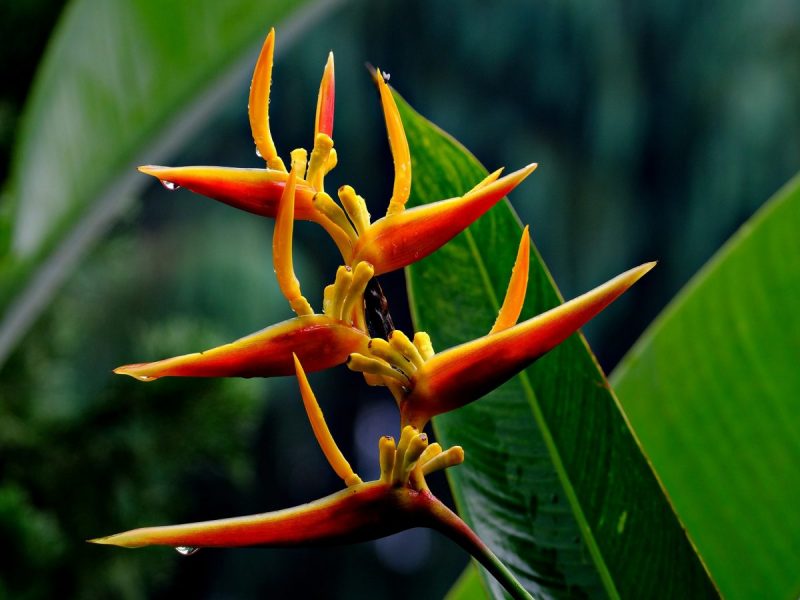
Lobster-claws (Heliconia spp.) is a perennial, tropical plant, native to areas such as Hawaii, Costa Rica, southern Florida. The plant has large, waxy leaves, similar to the Banana tree. The flowers are very decorative, vertical or pendular, similar to Strelizia, and can be found in shades of red, orange, yellow, or green.
Lobster-claws can be grown as a houseplant, but it grows and develops best in greenhouse conditions. This plant has high demands in terms of environmental factors, and some varieties can have a vigorous growth, reaching up to 4 meters in height. However, there are also smaller varieties that can be grown in apartment conditions.
Lobster-claws – species and varieties
- Heliconia angusta ‘Red Christmas’: with dark green leaves and red and white flowers;
- Heliconia bihai ‘Chocolate Dancer’: it is a plant resistant to low temperatures. It is a tall species, being an outdoor plant in the areas where it comes from. The flowers are very decorative, chocolate-colored, with a yellow or orange edge;
- Heliconia laneana cv. ‘Red Christmas’: it is a relatively cold-resistant, shade-loving species. The plant can grow up to 2 meters high. The flowers are red and white;
- Heliconia bihai ‘Manoa Sunrise’: with large, red bracts and a lime-green border;
- Heliconia psittacorum ‘Sassy’: multicolored flowers, located above the leaves. It is a good plant for the apartment, but it can also be used for cut flowers.
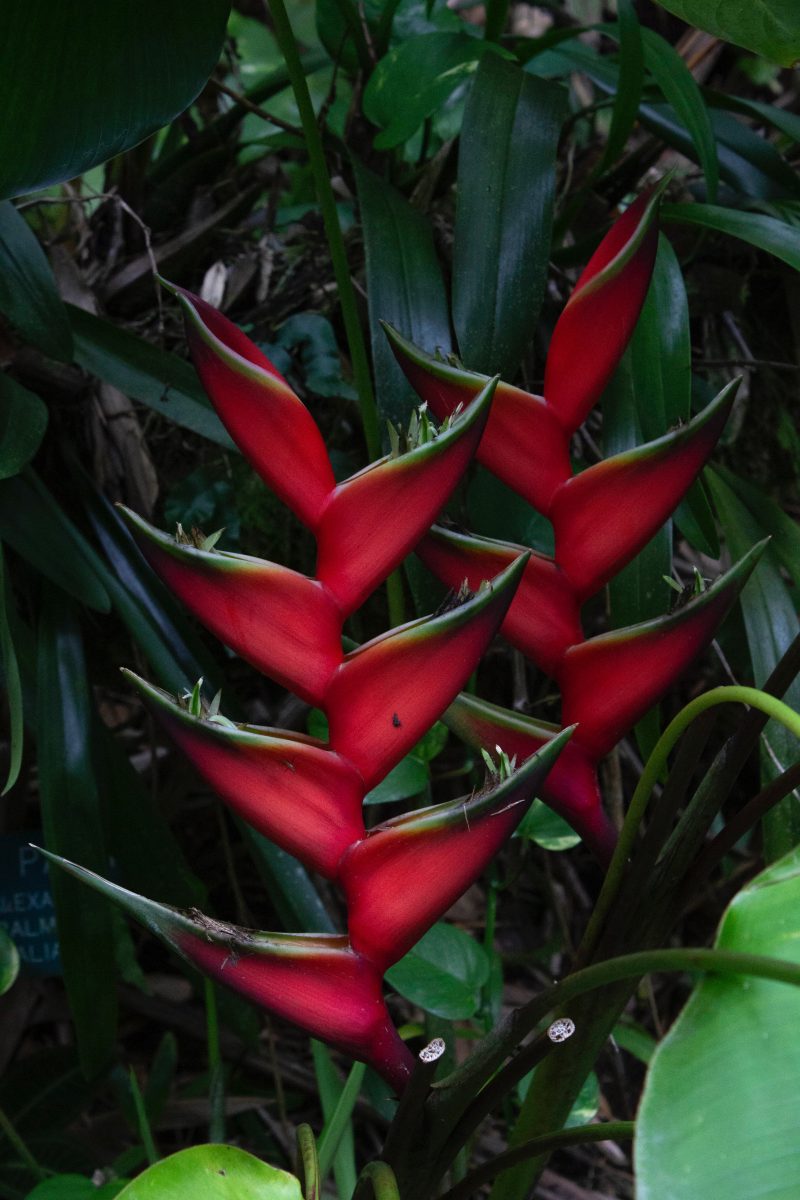
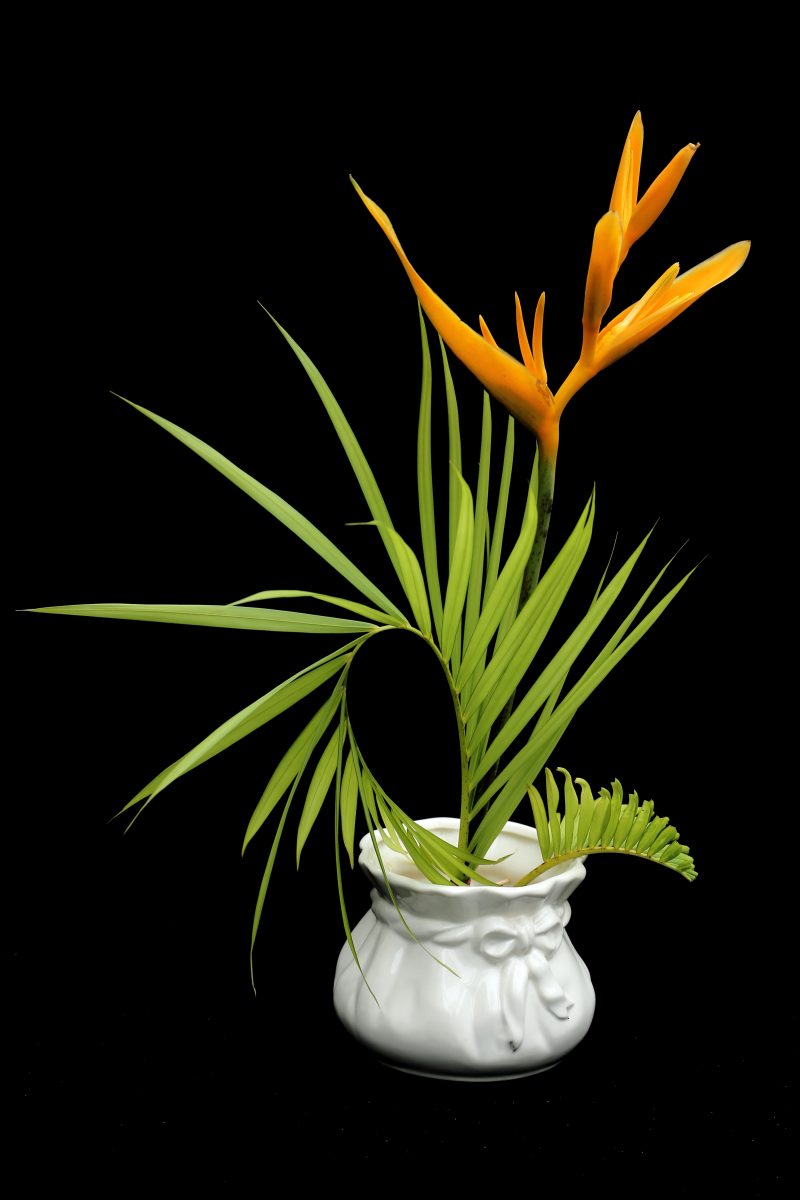
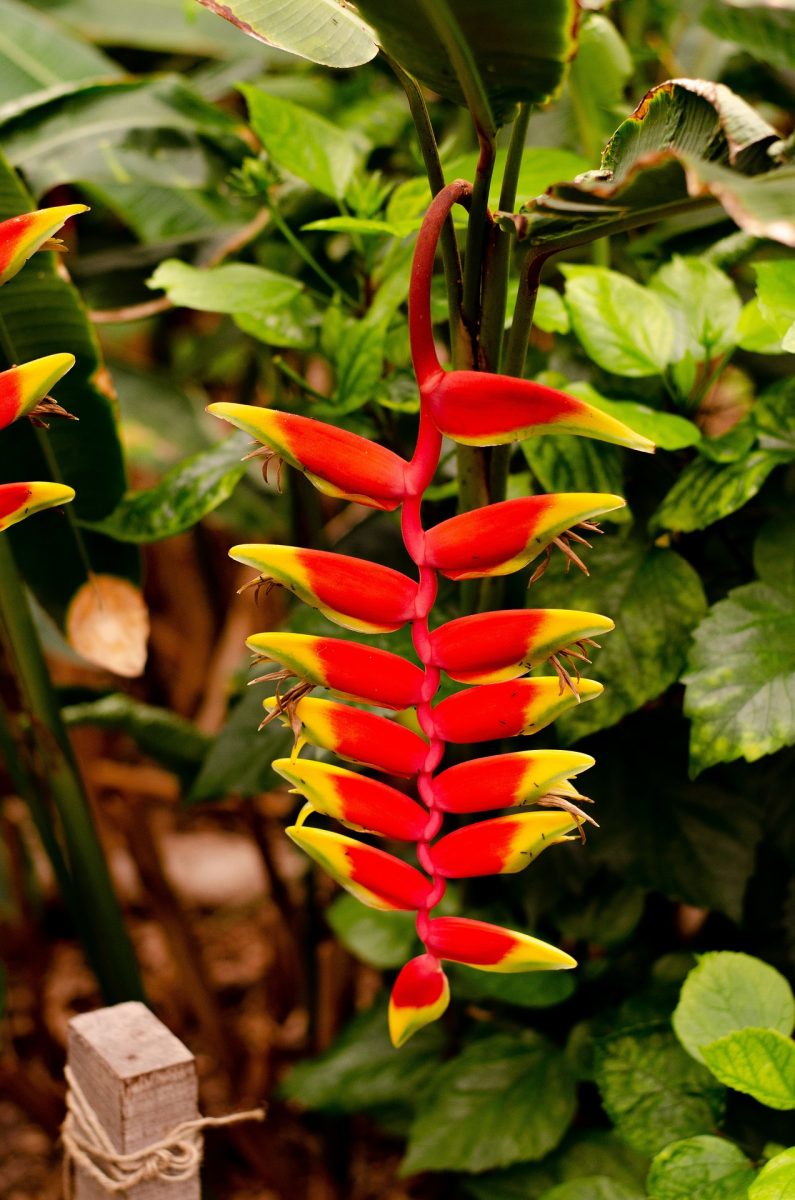
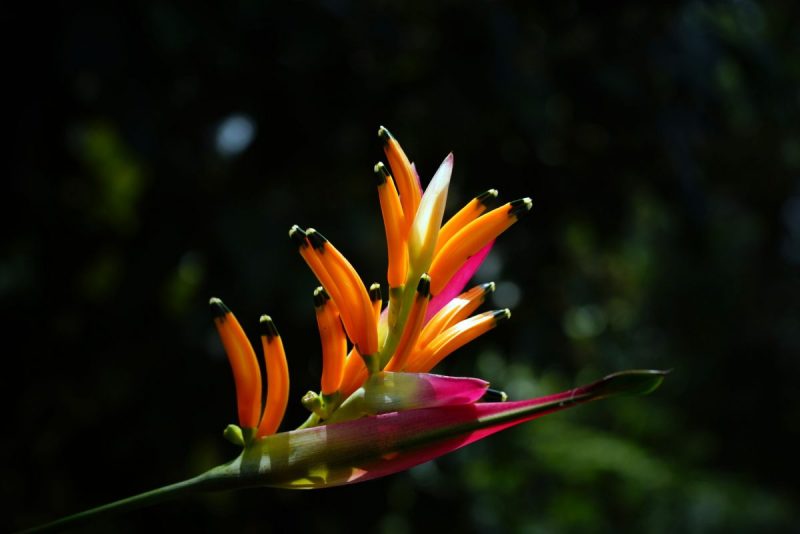
Environmental conditions
Light. They are light-loving plants and should be placed in spaces where they can benefit from strong, but indirect sunlight. During the cold season, when the light intensity decreases and the days are shorter, artificial light can be used to cover the needs of the plant.
Temperature. Since it comes from tropical regions, Lobster-claws prefers a warm and humid environment. It needs temperatures above 21 ℃ to grow properly and to bloom.
Humidity. To maintain a high atmospheric humidity, the regular spraying of the foliage with non-calcareous water is recommended.
Substrate. A substrate containing peat can be used, which ensures a good water drainage. Also, the pot must have holes for drainage.
Recommended products
-
You can find products on a different store
Change Store -
You can find products on a different store
Change Store -
You can find products on a different store
Change Store -
You can find products on a different store
Change Store -
You can find products on a different store
Change Store -
You can find products on a different store
Change Store -
You can find products on a different store
Change Store -
You can find products on a different store
Change Store -
You can find products on a different store
Change Store -
You can find products on a different store
Change Store -
You can find products on a different store
Change Store -
You can find products on a different store
Change Store -
You can find products on a different store
Change Store -
You can find products on a different store
Change Store -
You can find products on a different store
Change Store -
You can find products on a different store
Change Store -
You can find products on a different store
Change Store -
You can find products on a different store
Change Store -
You can find products on a different store
Change Store -
You can find products on a different store
Change Store -
You can find products on a different store
Change Store -
You can find products on a different store
Change Store -
You can find products on a different store
Change Store -
You can find products on a different store
Change Store
Lobster-claws – care
Watering. It needs regular watering, using a sufficient amount of water, so that the substrate is completely saturated. Before watering again, it is necessary for the substrate to dry almost completely. The water used for watering must be at room temperature.
Fertilizing. It can be fertilized regularly during the vegetative growth period. To bloom, it needs fertilizers with a higher phosphorus and lower nitrogen content. Fertilizers specially formulated for flowering plants can be used.
Recommended products
-
You can find products on a different store
Change Store -
You can find products on a different store
Change Store -
You can find products on a different store
Change Store -
You can find products on a different store
Change Store -
You can find products on a different store
Change Store -
You can find products on a different store
Change Store -
You can find products on a different store
Change Store -
You can find products on a different store
Change Store -
You can find products on a different store
Change Store -
You can find products on a different store
Change Store -
You can find products on a different store
Change Store -
You can find products on a different store
Change Store -
You can find products on a different store
Change Store -
You can find products on a different store
Change Store -
You can find products on a different store
Change Store -
You can find products on a different store
Change Store -
You can find products on a different store
Change Store -
You can find products on a different store
Change Store -
You can find products on a different store
Change Store -
You can find products on a different store
Change Store -
You can find products on a different store
Change Store -
You can find products on a different store
Change Store -
You can find products on a different store
Change Store -
You can find products on a different store
Change Store
Pruning. Remove the flowers and stems as they dry. If new shoots appear at ground level, the old stems can be removed.
Recommended products
-
You can find products on a different store
Change Store -
You can find products on a different store
Change Store -
You can find products on a different store
Change Store -
You can find products on a different store
Change Store -
You can find products on a different store
Change Store -
You can find products on a different store
Change Store -
You can find products on a different store
Change Store -
You can find products on a different store
Change Store -
You can find products on a different store
Change Store -
You can find products on a different store
Change Store -
You can find products on a different store
Change Store -
You can find products on a different store
Change Store -
You can find products on a different store
Change Store -
You can find products on a different store
Change Store -
You can find products on a different store
Change Store -
You can find products on a different store
Change Store -
You can find products on a different store
Change Store -
You can find products on a different store
Change Store -
You can find products on a different store
Change Store -
You can find products on a different store
Change Store -
You can find products on a different store
Change Store -
You can find products on a different store
Change Store -
You can find products on a different store
Change Store -
You can find products on a different store
Change Store
Transplanting. Lobster-claws does not need to be transplanted regularly. This can be done when the pot becomes too large.
Propagation. It is usually propagated by dividing the rhizomes. The rhizome can be sectioned into several portions (each portion must contain 1-2 nodes), which will be planted separately. This can be done at the beginning of spring. Small varieties can bloom approximately 6 months after planting the rhizomes.
Diseases and pests
In apartment conditions, Lobster-claws is rarely attacked by pests. If the plant is excessively watered and the environmental conditions are not optimal, it is prone to foliar or soil diseases.
Recommended products
-
You can find products on a different store
Change Store -
You can find products on a different store
Change Store -
You can find products on a different store
Change Store -
You can find products on a different store
Change Store -
You can find products on a different store
Change Store -
You can find products on a different store
Change Store -
You can find products on a different store
Change Store -
You can find products on a different store
Change Store -
You can find products on a different store
Change Store -
You can find products on a different store
Change Store -
You can find products on a different store
Change Store -
You can find products on a different store
Change Store -
You can find products on a different store
Change Store -
You can find products on a different store
Change Store -
You can find products on a different store
Change Store -
You can find products on a different store
Change Store -
You can find products on a different store
Change Store -
You can find products on a different store
Change Store -
You can find products on a different store
Change Store -
You can find products on a different store
Change Store -
You can find products on a different store
Change Store -
You can find products on a different store
Change Store -
You can find products on a different store
Change Store -
You can find products on a different store
Change Store
Additionally:
- Plants can be moved outside during the summer. They need acclimatization before being moved outside. When the temperatures start to drop below 15 ℃, the plants are ready to be moved indoors. Acclimatization is necessary once more;
- In general, Lobster-claws does not bloom in the first season, needing at least 2 years to mature and bloom.















































































































































































































































































































































































































































